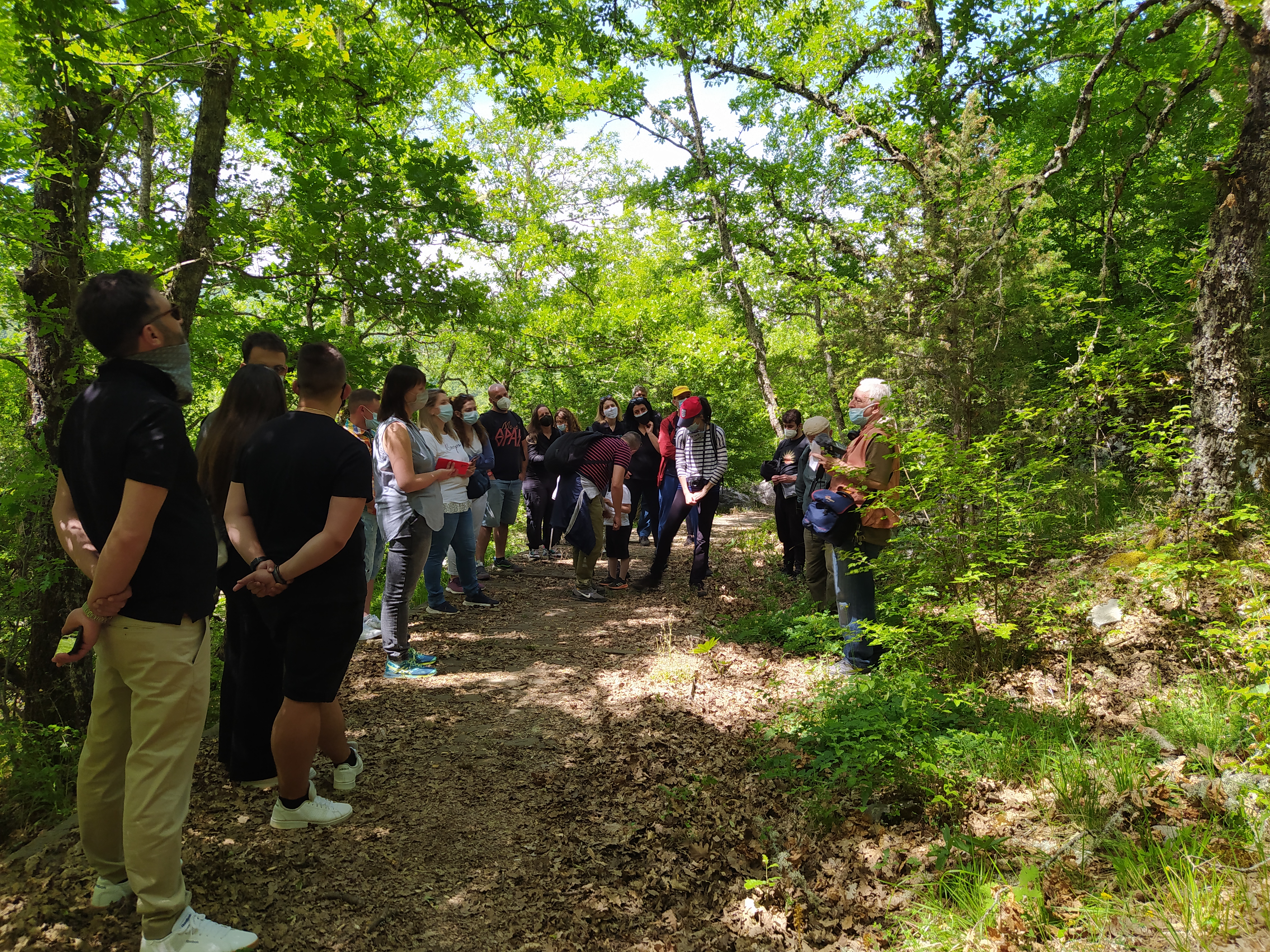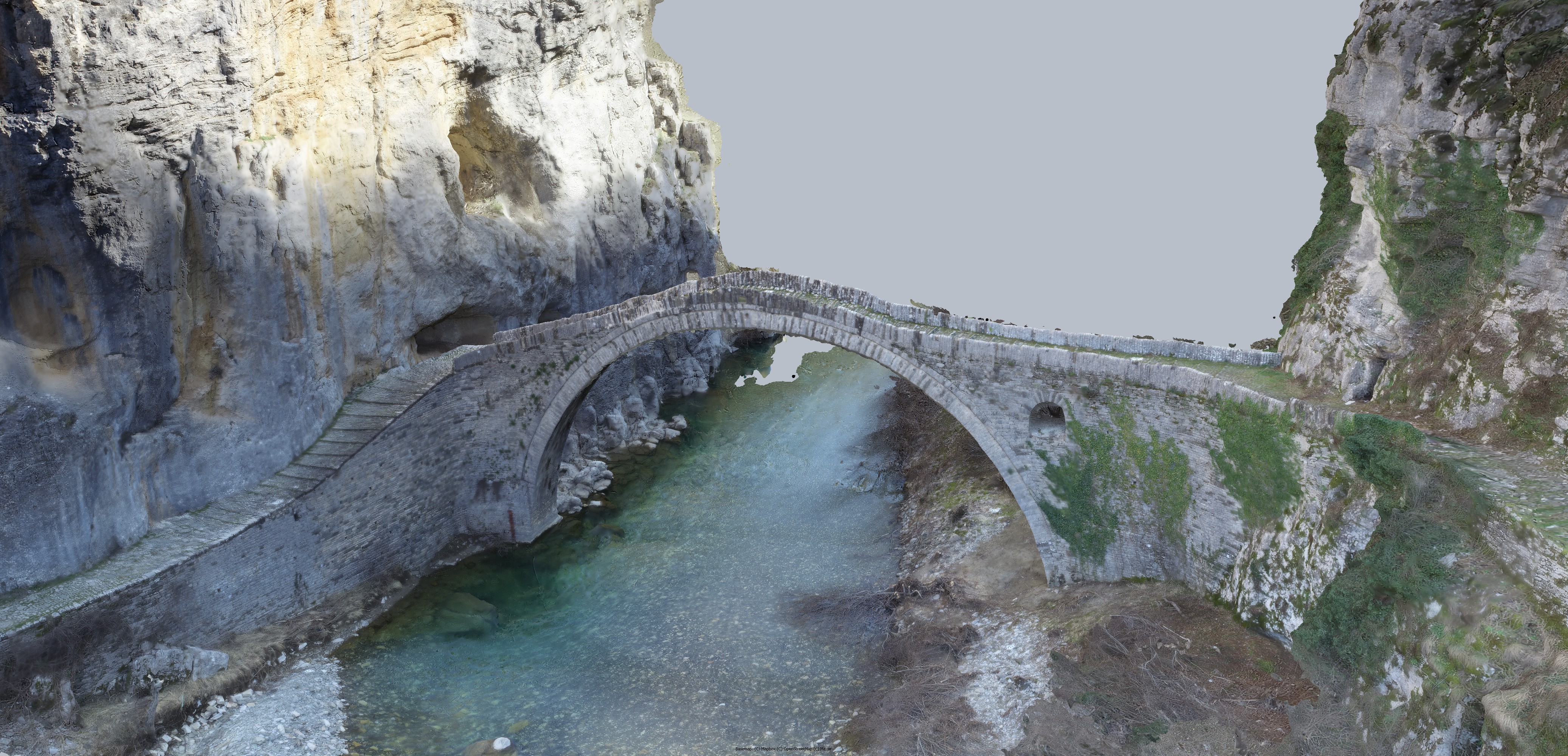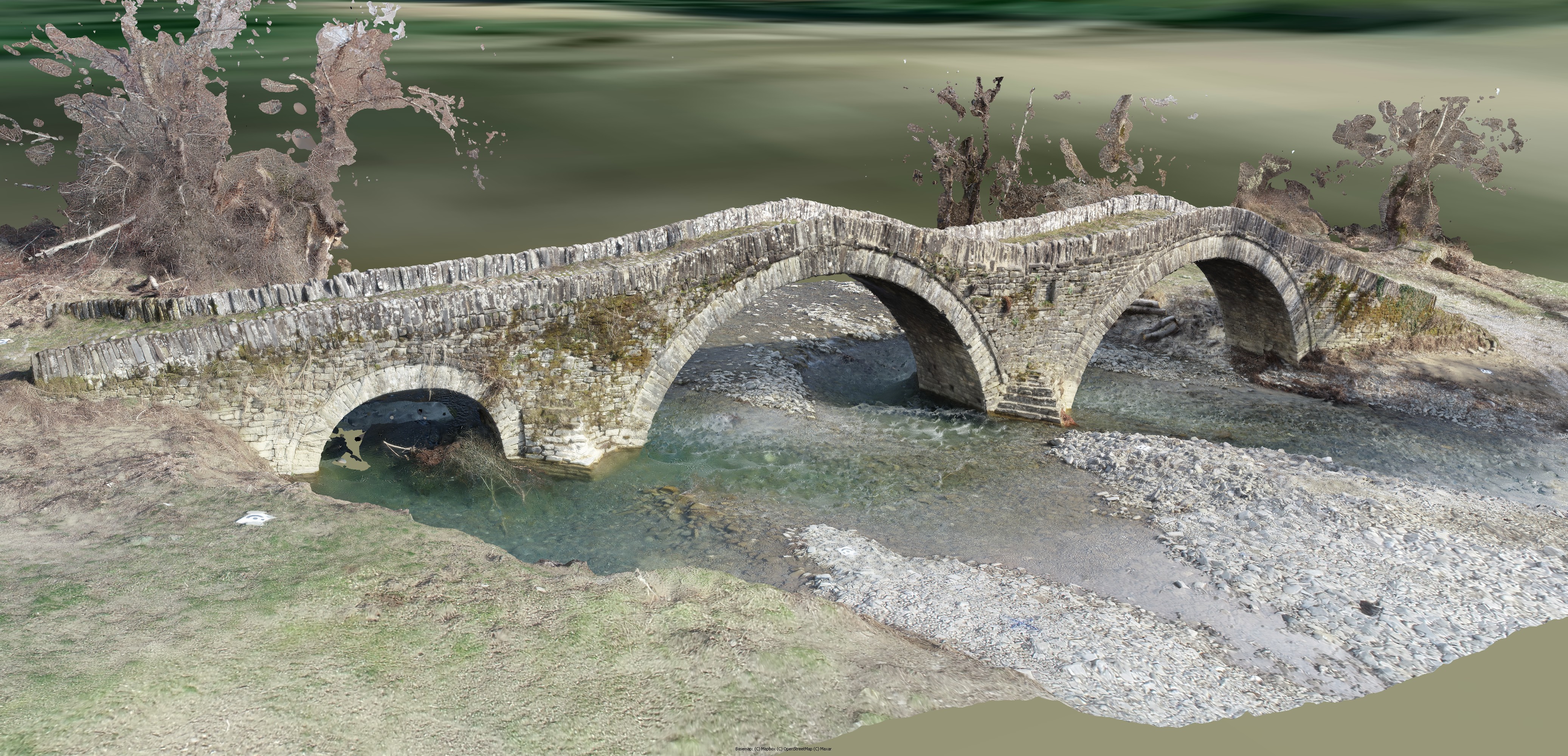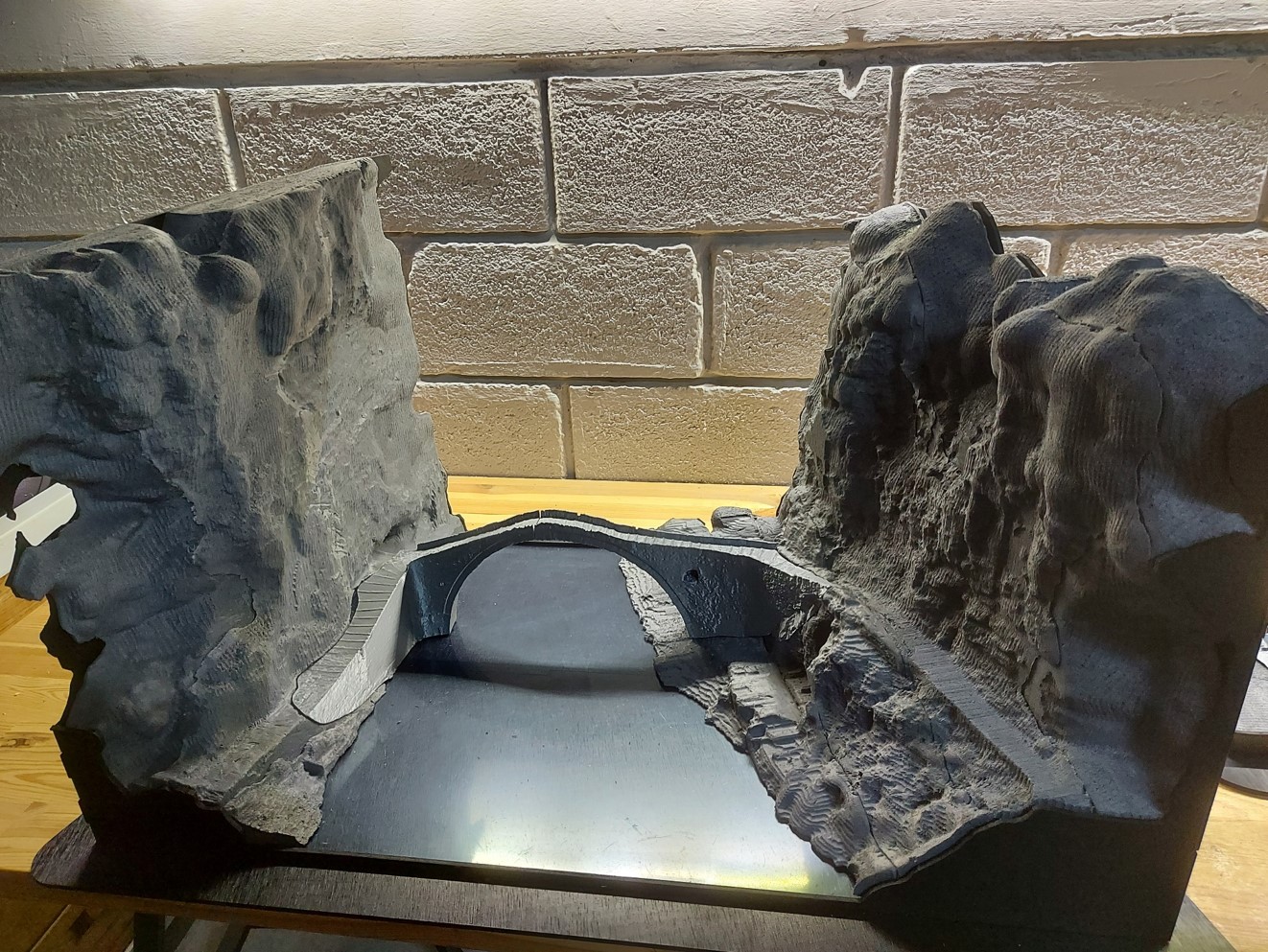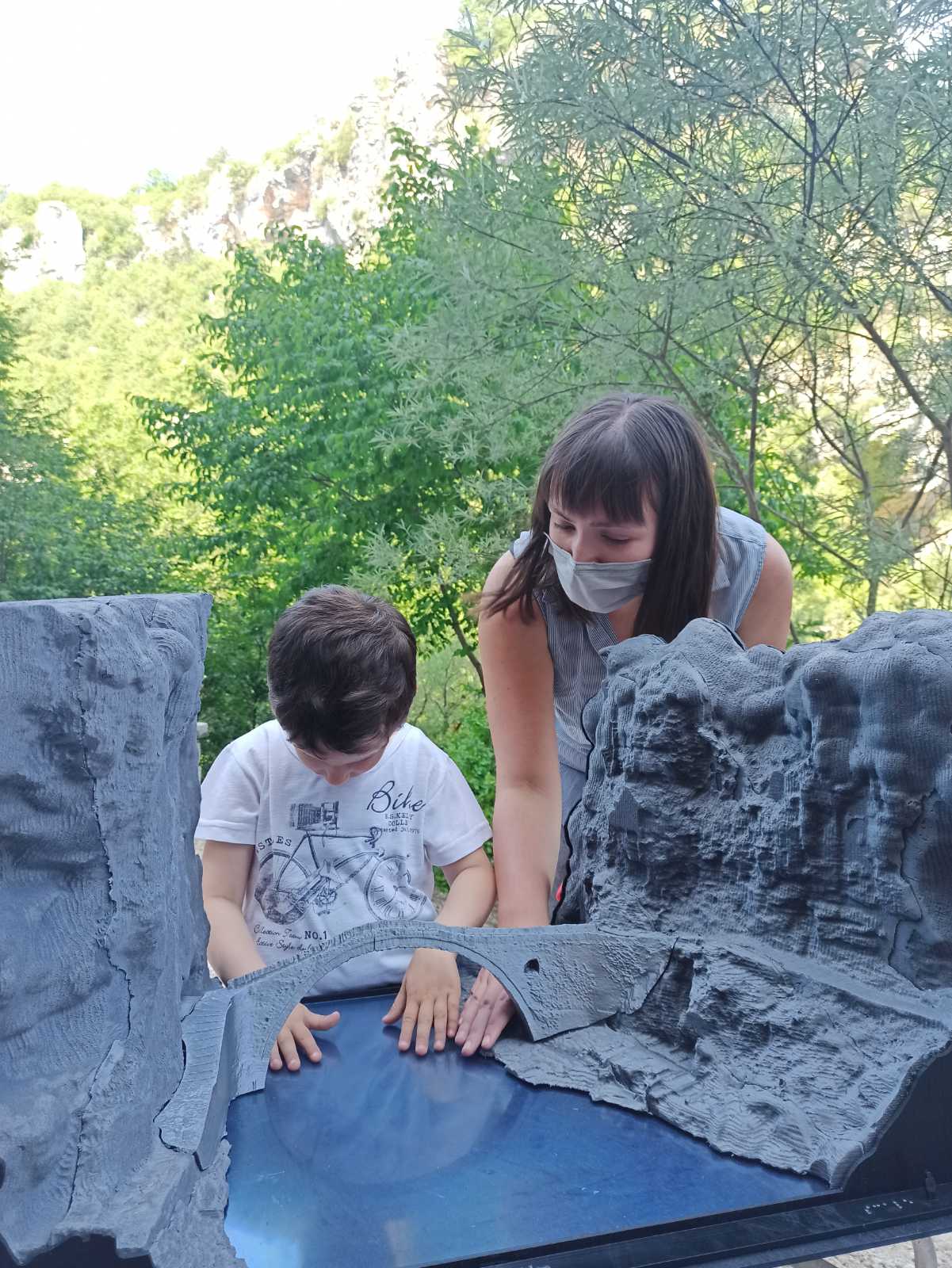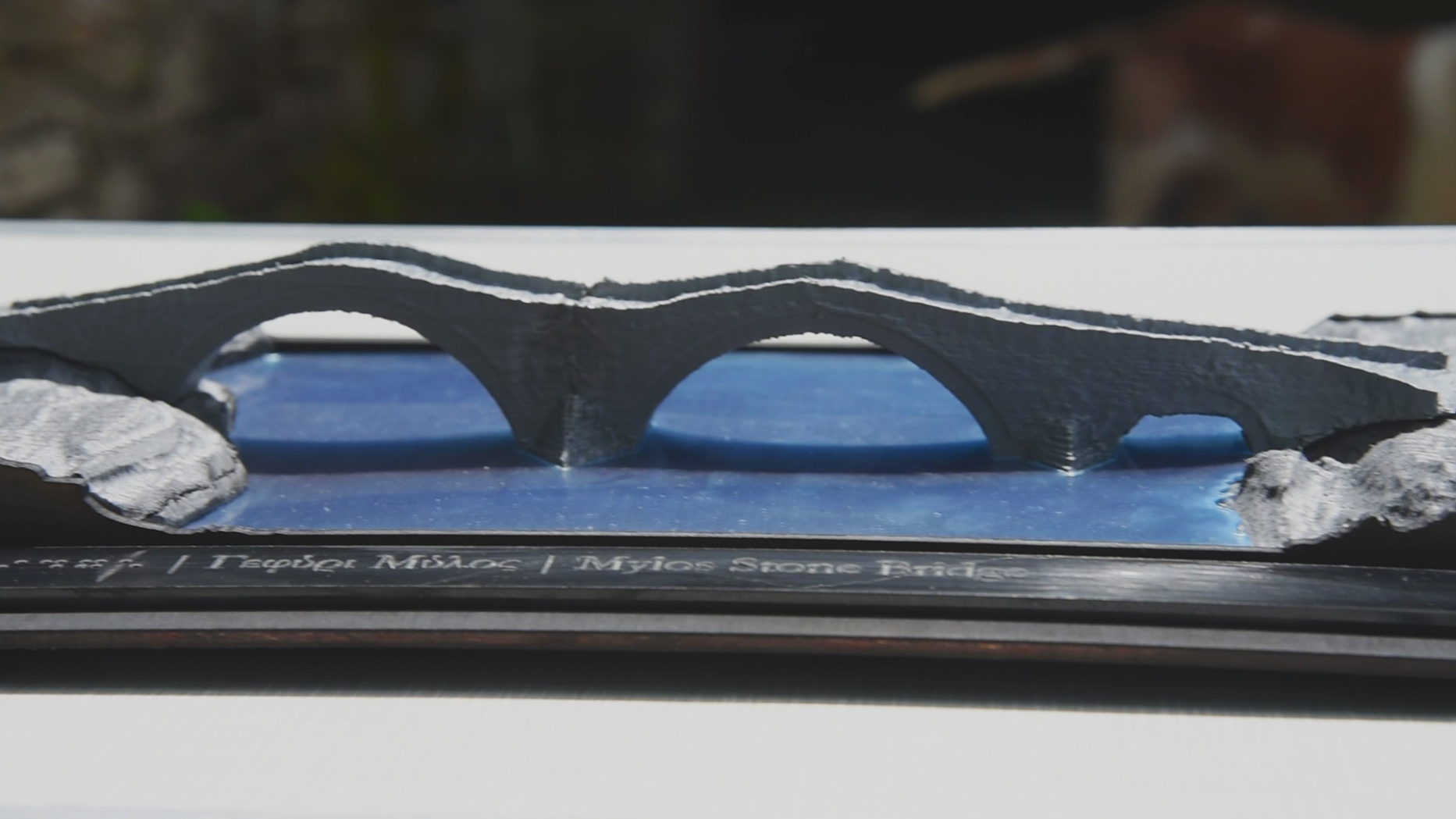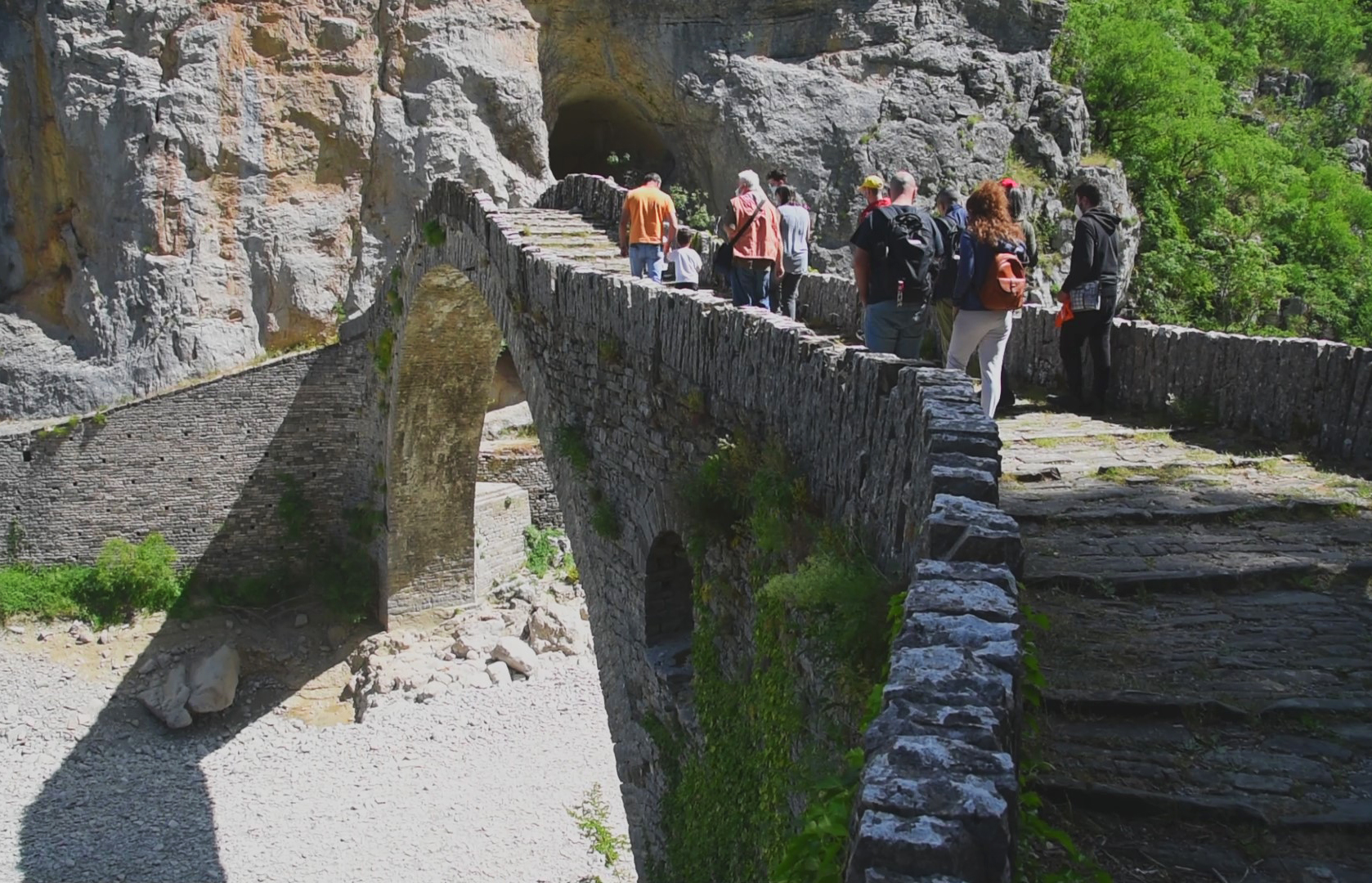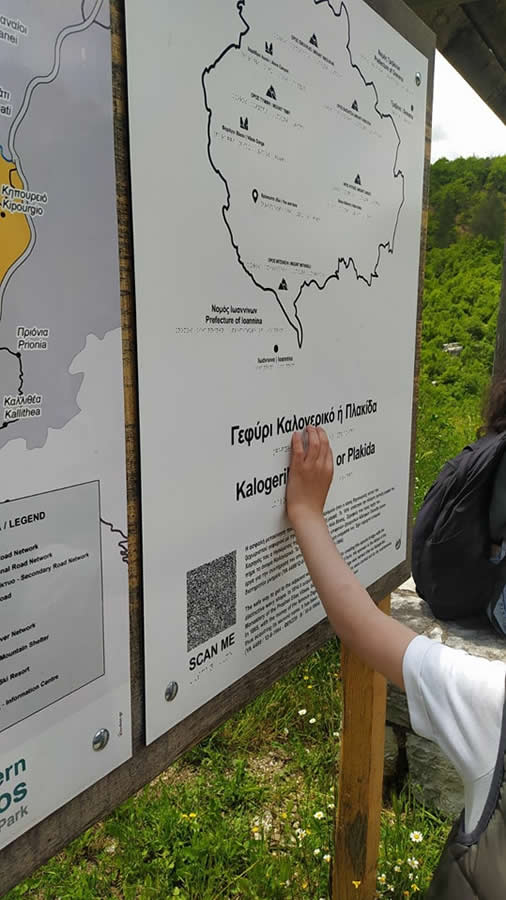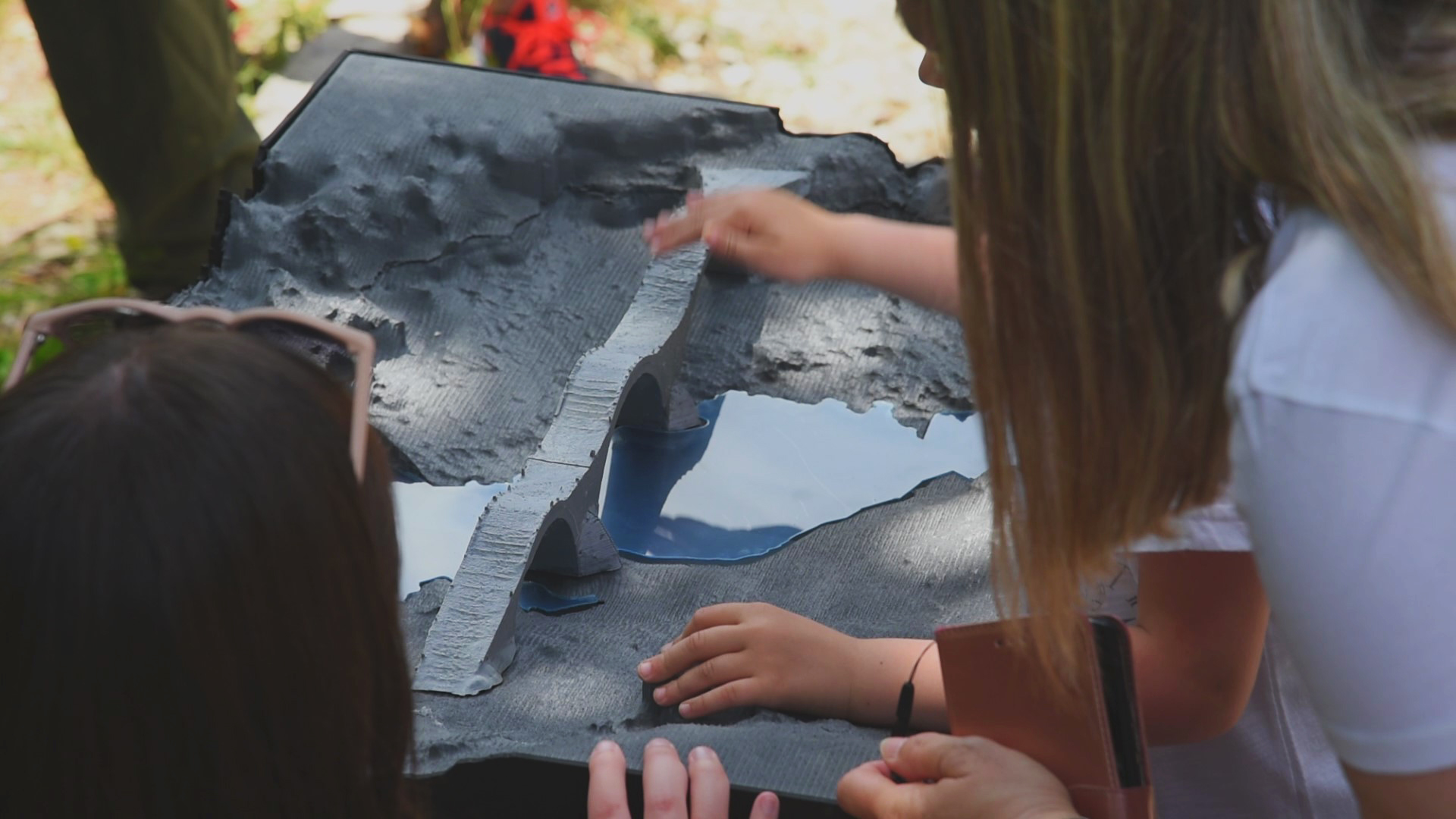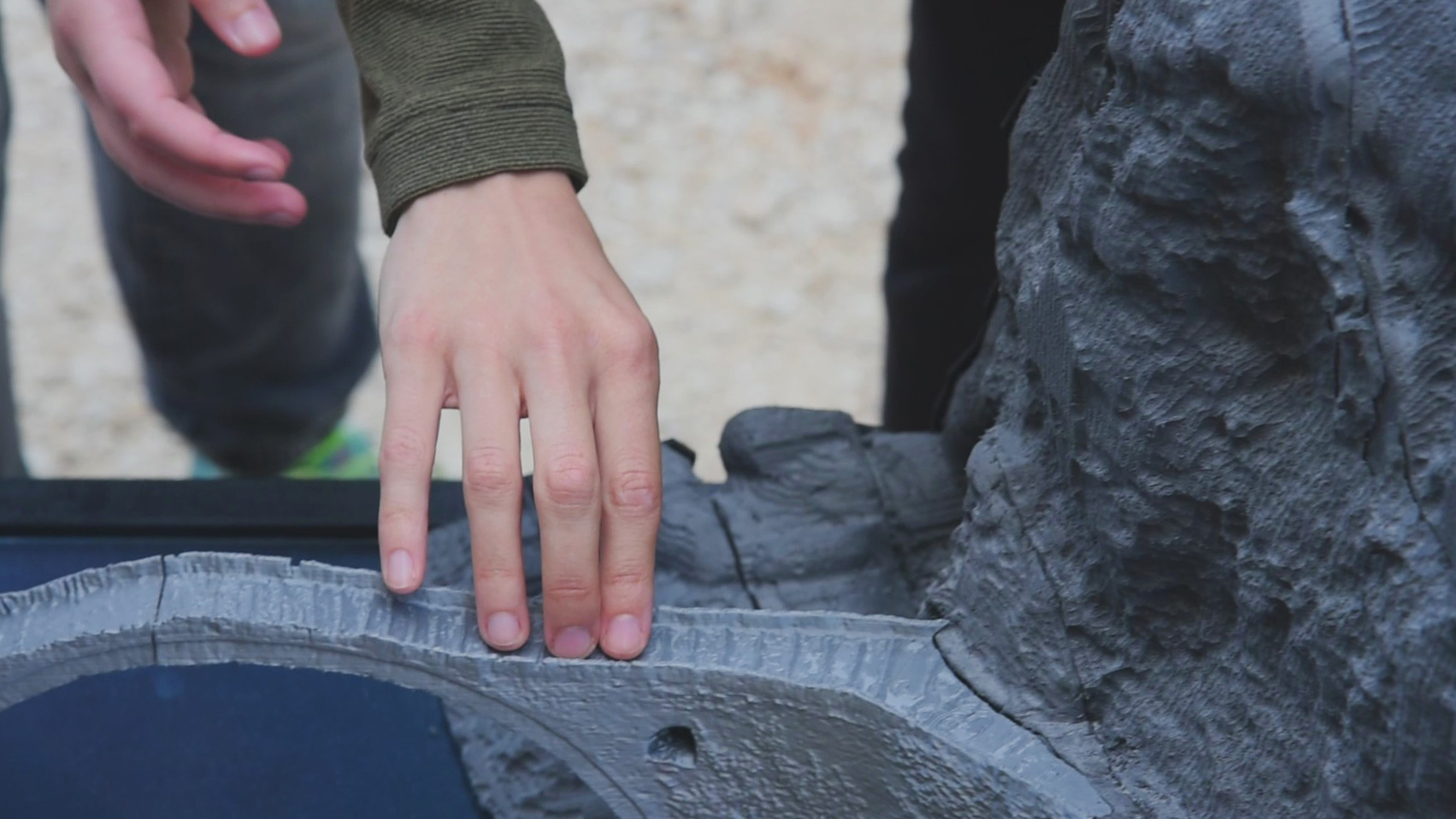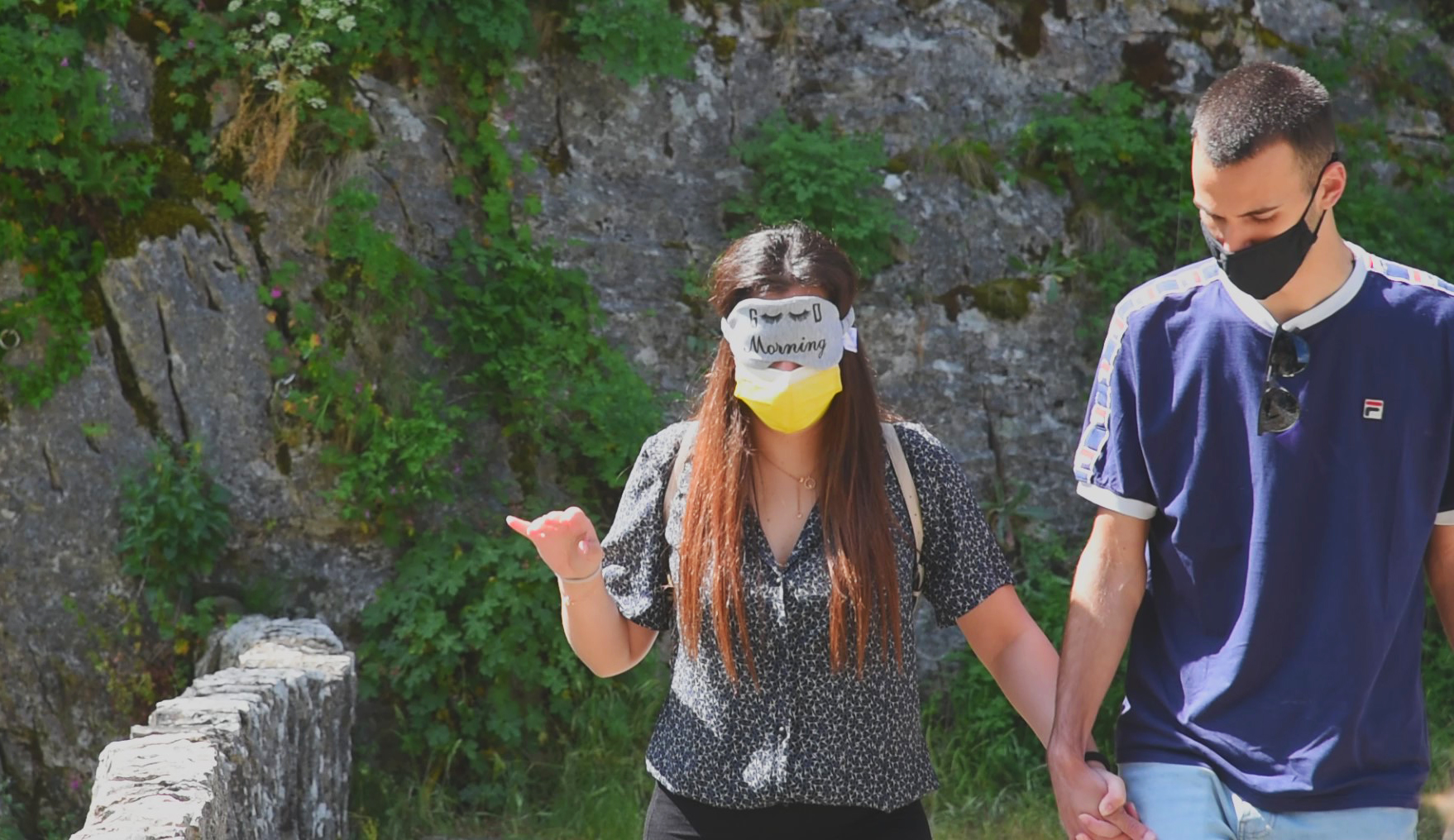Prioritising the places and people that need it the most
Listen-Touch-Feel
{Empty}
Listen-Touch-Feel redefines accessibility in cultural and natural heritage for visually impaired individuals. Using 3D-printed models and immersive soundscapes based on acoustic ecology, the project offers a multi-sensory way to experience the historic landmarks and natural landscapes. Set in the stunning Vikos-Aoos UNESCO Global Geopark, it promotes sustainability and universal access, highlighting the value of an inclusive society.
Greece
Local
Zagori NorthWest Greece
Mainly rural
It refers to other types of transformations (soft investment)
Yes
2021-02-01
No
No
Yes
Yes
No
As a representative of an organisation
Listen-Touch-Feel aimed to enhance cultural accessibility and inclusion for visually impaired individuals by providing an innovative, multi-sensory interpretation of the Vikos-Aoos UNESCO Global Geopark. Implemented by Ecomuseum Zagori, the initiative sought to improve spatial perception and engagement with natural and cultural heritage through interactive technologies and participatory experiences. Direct beneficiaries among visually impaired people were trainers, educators and volunteers as well as associations and institutions supporting accessibility in cultural landscapes. More specifically, traditional historic bridges, cultural landmarks of the Geopark, were scaled down to 3D printed models along with their surrounding landscape, to be interpretated through touch and soundscape recordings with audio stimuli, addressed to small groups. The project was structured into two key phases. First, a capacity building and training to inform the wider public regarding new technological possibilities on the accessibility of cultural landscapes, by presenting best practices and specific actions from open-source products to commercial technologies. Next part was devoted on-site implementation which involved interpretive walks where participants engaged with scaled 3D-printed models of historic bridges and landscapes, supported by soundscape recordings and audio descriptions. The project introduced an experiential soundscape learning approach, utilizing acoustic ecology principles to replace visual perception with auditory stimuli, encouraging participants to engage in soundscape recording. The project successfully developed an inclusive methodology for interpreting cultural landscapes, enabling visually impaired individuals to connect with heritage through touch and sound. It also raised awareness of accessibility challenges and solutions, fostering collaboration among visually impaired individuals, educators, and accessibility advocates.
Geopark
Accessibility
Inclusion
Heritage
Soundscape
Listen-Touch-Feel integrates eco-friendly practices and minimizes the environmental impact of cultural heritage interpretation. The project promotes low-impact, nature-based solutions, using fabrication methods to create 3D-printed models of traditional stone bridges and landscapes, reducing the need for physical alterations to heritage sites.
By encouraging non-invasive, multi-sensory engagement, such as soundscape walks and tactile exploration, the project eliminates the need for large-scale infrastructure while enhancing accessibility. Through the use of acoustic ecology and soundscapes, participants develop a deeper connection to the natural landscape, raising awareness of biodiversity conservation and fostering a greater appreciation of the delicate balance of natural ecosystems.
The interpretive walks took place within the Vikos-Aoos Geopark, a region of high ecological value, ensuring that all activities respected the natural environment. The project’s emphasis on acoustic ecology not only encouraged participants to engage with the natural sound environment but also promoted a sustainable relationship between people and nature, reinforcing the importance of preserving soundscapes as part of ecological heritage.
By participating in these low-impact, nature-based activities, individuals develop a profound understanding of their surroundings, fostering a stronger commitment to environmental stewardship. The project serves as a catalyst for sustainability, inspiring local stakeholders to adopt preservation, regeneration, and lifecycle thinking in heritage management. It also highlights the potential for alternative, sustainable tourism models, proving that cultural and natural heritage interpretation can be both inclusive and environmentally responsible.
By encouraging non-invasive, multi-sensory engagement, such as soundscape walks and tactile exploration, the project eliminates the need for large-scale infrastructure while enhancing accessibility. Through the use of acoustic ecology and soundscapes, participants develop a deeper connection to the natural landscape, raising awareness of biodiversity conservation and fostering a greater appreciation of the delicate balance of natural ecosystems.
The interpretive walks took place within the Vikos-Aoos Geopark, a region of high ecological value, ensuring that all activities respected the natural environment. The project’s emphasis on acoustic ecology not only encouraged participants to engage with the natural sound environment but also promoted a sustainable relationship between people and nature, reinforcing the importance of preserving soundscapes as part of ecological heritage.
By participating in these low-impact, nature-based activities, individuals develop a profound understanding of their surroundings, fostering a stronger commitment to environmental stewardship. The project serves as a catalyst for sustainability, inspiring local stakeholders to adopt preservation, regeneration, and lifecycle thinking in heritage management. It also highlights the potential for alternative, sustainable tourism models, proving that cultural and natural heritage interpretation can be both inclusive and environmentally responsible.
Listen-Touch-Feel was designed to offer a high-quality, immersive, and aesthetically enriching experience by combining design innovation and cultural interpretation. The key objective was to create an inclusive, multi-sensory experience that enhances spatial perception and fosters deeper engagement with the natural and cultural heritage of the area.
Aesthetically, the project ensured a high level of design quality by using 3D-printed models of traditional bridges and surrounding landscapes. These models were carefully crafted to be both tactilely detailed and proportionally accurate, allowing participants to perceive the shapes, textures, and spatial relationships of cultural landmarks. The use of scale, material selection, and textural contrast in the models improved the quality of interaction, providing a meaningful and artistic way to experience heritage through touch.
To complement the tactile elements, the project incorporated soundscape recordings, adding an immersive acoustic dimension to the experience. The soundscapes captured natural sounds, cultural activities and environmental acoustics enabling visually impaired participants to experience the landscape’s atmosphere and history through hearing. This multi-sensory approach transformed heritage interpretation into a rich, artistic, and emotional journey.
The project was implemented in a region of exceptional natural beauty, where the traditional stone-built bridges seamlessly blend into the surrounding environment. These architectural landmarks, set against the dramatic gorges and forest, enhance the aesthetic harmony of the landscape. The interpretive trails pass through natural environments rich in biodiversity, allowing participants to experience the sounds, textures, and atmosphere of an area where nature and cultural heritage coexist in perfect balance.
Aesthetically, the project ensured a high level of design quality by using 3D-printed models of traditional bridges and surrounding landscapes. These models were carefully crafted to be both tactilely detailed and proportionally accurate, allowing participants to perceive the shapes, textures, and spatial relationships of cultural landmarks. The use of scale, material selection, and textural contrast in the models improved the quality of interaction, providing a meaningful and artistic way to experience heritage through touch.
To complement the tactile elements, the project incorporated soundscape recordings, adding an immersive acoustic dimension to the experience. The soundscapes captured natural sounds, cultural activities and environmental acoustics enabling visually impaired participants to experience the landscape’s atmosphere and history through hearing. This multi-sensory approach transformed heritage interpretation into a rich, artistic, and emotional journey.
The project was implemented in a region of exceptional natural beauty, where the traditional stone-built bridges seamlessly blend into the surrounding environment. These architectural landmarks, set against the dramatic gorges and forest, enhance the aesthetic harmony of the landscape. The interpretive trails pass through natural environments rich in biodiversity, allowing participants to experience the sounds, textures, and atmosphere of an area where nature and cultural heritage coexist in perfect balance.
Listen-Touch-Feel was designed with inclusion at its core, ensuring accessibility, affordability, and equal participation for visually impaired individuals in experiencing Vikos-Aoos Geopark. The project addressed key inclusive principles, including universal access, participatory governance, and affordability, creating a scalable, adaptable framework that can be implemented in other sites and cultural landscapes.
The primary objective was to remove barriers to heritage interpretation by developing multi-sensory experiences tailored to visually impaired individuals. Using 3D-printed models of historic stone bridges and surrounding landscapes, the project allowed participants to explore cultural landmarks through touch, making heritage more accessible. Additionally, soundscape recordings provided an auditory representation of the environment, helping participants perceive the natural and cultural setting without sight.
To ensure affordability and broad participation, the project used open-source technologies and cost-effective methods, making it possible to replicate and scale the initiative without financial constraints. The program was offered free of charge to participants, ensuring economic status was no barrier to participation.
The project promoted inclusive governance and co-creation, engaging visually impaired individuals, educators, and accessibility experts in the design process. Through capacity-building seminars, stakeholders actively contributed to shaping the interpretive methods, ensuring the approach met real needs. This participatory model empowered visually impaired individuals to be not just beneficiaries, but also key contributors to the project’s development. By engaging local stakeholders the initiative strengthened awareness and commitment to creating accessible cultural and natural experiences.
Listen-Touch-Feel demonstrates how cultural heritage can be made fully accessible through inclusive design principles and the use of technology.
The primary objective was to remove barriers to heritage interpretation by developing multi-sensory experiences tailored to visually impaired individuals. Using 3D-printed models of historic stone bridges and surrounding landscapes, the project allowed participants to explore cultural landmarks through touch, making heritage more accessible. Additionally, soundscape recordings provided an auditory representation of the environment, helping participants perceive the natural and cultural setting without sight.
To ensure affordability and broad participation, the project used open-source technologies and cost-effective methods, making it possible to replicate and scale the initiative without financial constraints. The program was offered free of charge to participants, ensuring economic status was no barrier to participation.
The project promoted inclusive governance and co-creation, engaging visually impaired individuals, educators, and accessibility experts in the design process. Through capacity-building seminars, stakeholders actively contributed to shaping the interpretive methods, ensuring the approach met real needs. This participatory model empowered visually impaired individuals to be not just beneficiaries, but also key contributors to the project’s development. By engaging local stakeholders the initiative strengthened awareness and commitment to creating accessible cultural and natural experiences.
Listen-Touch-Feel demonstrates how cultural heritage can be made fully accessible through inclusive design principles and the use of technology.
Listen-Touch-Feel actively involved citizens, visually impaired individuals, educators, trainers and local stakeholders ensuring a participatory approach in both its design and implementation. The project was designed to directly benefit visually impaired individuals, providing them with accessible, multi-sensory experiences of the Vikos-Aoos Geopark, fostering social inclusion and equal access to cultural heritage.
From the early stages, associations for the visually impaired played a key role in ensuring that the project effectively met their needs. Educators, musicologists and trainers participated in capacity-building seminars, where they were introduced to technological tools for accessible heritage interpretation. Their feedback helped refine the audio descriptions and interactive methods, improving the overall experience for participants.
Local volunteers and environmental and cultural organizations contributed by assisting in on-site activities, including guiding participants during interpretive walks and supporting soundscape recording tours. This hands-on involvement strengthened community engagement and encouraged a more inclusive understanding of heritage interpretation.
This broad community engagement strengthened the project’s impact, fostering greater social awareness of accessibility issues while promoting inclusive cultural tourism. By empowering local stakeholders and providing them with the knowledge and tools to implement similar initiatives, the project leaves a lasting impact on accessibility policies and serves as a model for future inclusive heritage projects.
From the early stages, associations for the visually impaired played a key role in ensuring that the project effectively met their needs. Educators, musicologists and trainers participated in capacity-building seminars, where they were introduced to technological tools for accessible heritage interpretation. Their feedback helped refine the audio descriptions and interactive methods, improving the overall experience for participants.
Local volunteers and environmental and cultural organizations contributed by assisting in on-site activities, including guiding participants during interpretive walks and supporting soundscape recording tours. This hands-on involvement strengthened community engagement and encouraged a more inclusive understanding of heritage interpretation.
This broad community engagement strengthened the project’s impact, fostering greater social awareness of accessibility issues while promoting inclusive cultural tourism. By empowering local stakeholders and providing them with the knowledge and tools to implement similar initiatives, the project leaves a lasting impact on accessibility policies and serves as a model for future inclusive heritage projects.
Listen-Touch-Feel was developed through a multi-level, transdisciplinary collaboration involving a diverse range of stakeholders each contributing their expertise to enhance inclusion, accessibility, and cultural heritage interpretation.
Ecomuseum Zagori led the project, directly engaging visually impaired individuals, educators, volunteers, and local cultural organizations. The Municipality of Zagori, the Vikos-Aoos Geopark, and the Management Body of Northern Pindos National Park played a crucial role in facilitating access to cultural and natural sites and promoting sustainable, low-impact tourism. Local hiking associations and volunteers assisted in organizing guided sensory walks, helping visually impaired participants navigate the trails safely while ensuring minimal environmental impact. Fab-Lab Innovation Center of Ioannina, contributed to the technological aspects of the project, ensuring the project leveraged cutting-edge tools to enhance accessibility.
Local schools, teachers, and special education professionals were engaged to co-develop educational activities, introducing inclusive heritage interpretation into classroom learning. Their involvement ensured that the project had a long-term educational impact, promoting awareness of accessibility issues among younger generations.
The Service of Modern Monuments and Technical Works of Epirus, the Ionian Islands, and Western Macedonia provided expertise on cultural preservation, ensuring that the 3D-printed models of traditional stone bridges maintained historical and architectural accuracy. The Panhellenic Association of the Blind (Northwestern Greece Division) played a key role in consulting on accessibility and testing the multi-sensory tools, ensuring that they met the real needs of visually impaired individuals. Their feedback was essential in refining the 3D models and soundscapes, making them more intuitive and effective.
Ecomuseum Zagori led the project, directly engaging visually impaired individuals, educators, volunteers, and local cultural organizations. The Municipality of Zagori, the Vikos-Aoos Geopark, and the Management Body of Northern Pindos National Park played a crucial role in facilitating access to cultural and natural sites and promoting sustainable, low-impact tourism. Local hiking associations and volunteers assisted in organizing guided sensory walks, helping visually impaired participants navigate the trails safely while ensuring minimal environmental impact. Fab-Lab Innovation Center of Ioannina, contributed to the technological aspects of the project, ensuring the project leveraged cutting-edge tools to enhance accessibility.
Local schools, teachers, and special education professionals were engaged to co-develop educational activities, introducing inclusive heritage interpretation into classroom learning. Their involvement ensured that the project had a long-term educational impact, promoting awareness of accessibility issues among younger generations.
The Service of Modern Monuments and Technical Works of Epirus, the Ionian Islands, and Western Macedonia provided expertise on cultural preservation, ensuring that the 3D-printed models of traditional stone bridges maintained historical and architectural accuracy. The Panhellenic Association of the Blind (Northwestern Greece Division) played a key role in consulting on accessibility and testing the multi-sensory tools, ensuring that they met the real needs of visually impaired individuals. Their feedback was essential in refining the 3D models and soundscapes, making them more intuitive and effective.
The project integrated several disciplines and knowledge fields to create an innovative and inclusive experience. The key fields involved included cultural heritage management, accessibility design, digital fabrication, acoustic ecology, sound design, education, and environmental science.
Cultural heritage management played a critical role in ensuring the project preserved the cultural significance of the Vikos-Aoos Geopark. Experts in this field guided the interpretation of the area’s history, particularly its traditional stone-built bridges, ensuring the project honored the heritage while making it accessible to all. Accessibility specialists played a crucial role in advising on the usability of both the tactile models and the soundscapes, ensuring they were effective and intuitive for visually impaired participants. Meanwhile, musicologists and sound designers captured the unique acoustic landscapes of the area, enriching the experience through auditory storytelling and environmental sounds.
Digital fabrication experts provided the technical expertise required to create the 3D-printed models. Their collaboration with accessibility designers ensured that the models were functional, accessible, and visually accurate representations of the cultural landmarks. Acoustic ecologists and sound designers were also integral, as they gathered soundscapes that helped immerse participants in the natural environment. Their work focused on capturing the natural sounds of the area, enhancing the sensory experience of the project and promoting environmental awareness.
Educators and environmental science experts contributed by shaping the educational content and interpretive trails. Their collaboration ensured that the project not only highlighted cultural and environmental knowledge but also promoted the values of conservation and sustainability. Additionally, local stakeholders actively supported the initiative by participating in sensory walks and outreach efforts.
Cultural heritage management played a critical role in ensuring the project preserved the cultural significance of the Vikos-Aoos Geopark. Experts in this field guided the interpretation of the area’s history, particularly its traditional stone-built bridges, ensuring the project honored the heritage while making it accessible to all. Accessibility specialists played a crucial role in advising on the usability of both the tactile models and the soundscapes, ensuring they were effective and intuitive for visually impaired participants. Meanwhile, musicologists and sound designers captured the unique acoustic landscapes of the area, enriching the experience through auditory storytelling and environmental sounds.
Digital fabrication experts provided the technical expertise required to create the 3D-printed models. Their collaboration with accessibility designers ensured that the models were functional, accessible, and visually accurate representations of the cultural landmarks. Acoustic ecologists and sound designers were also integral, as they gathered soundscapes that helped immerse participants in the natural environment. Their work focused on capturing the natural sounds of the area, enhancing the sensory experience of the project and promoting environmental awareness.
Educators and environmental science experts contributed by shaping the educational content and interpretive trails. Their collaboration ensured that the project not only highlighted cultural and environmental knowledge but also promoted the values of conservation and sustainability. Additionally, local stakeholders actively supported the initiative by participating in sensory walks and outreach efforts.
Listen-Touch-Feel introduces an innovative approach to accessibility in cultural and natural heritage, setting it apart from mainstream initiatives. While traditional heritage interpretation relies heavily on visual content, this project reimagines engagement through multi-sensory experiences, enabling visually impaired individuals to explore historic landmarks and landscapes through touch and sound.
The integration of 3D-printed models allows participants to physically explore the forms and textures of traditional stone bridges and surrounding landscapes, offering a tactile alternative to visual observation. This method enhances spatial perception and fosters a deeper connection to cultural heritage.
In addition, the project pioneers the use of acoustic ecology in heritage interpretation. Through carefully designed soundscape recordings, participants can experience the natural and cultural environment in an immersive way, moving beyond conventional audio guides. This approach enriches the sensory experience, making landscapes and historical sites more intuitively accessible.
Unlike many accessibility projects that focus solely on infrastructure modifications, Listen-Touch-Feel is non-invasive, preserving the integrity of natural and cultural sites while still expanding access. It combines inclusive design, digital fabrication, and environmental awareness, serving as a scalable model that can be replicated in various heritage sites, demonstrating that accessibility and sustainability can go hand in hand.
The integration of 3D-printed models allows participants to physically explore the forms and textures of traditional stone bridges and surrounding landscapes, offering a tactile alternative to visual observation. This method enhances spatial perception and fosters a deeper connection to cultural heritage.
In addition, the project pioneers the use of acoustic ecology in heritage interpretation. Through carefully designed soundscape recordings, participants can experience the natural and cultural environment in an immersive way, moving beyond conventional audio guides. This approach enriches the sensory experience, making landscapes and historical sites more intuitively accessible.
Unlike many accessibility projects that focus solely on infrastructure modifications, Listen-Touch-Feel is non-invasive, preserving the integrity of natural and cultural sites while still expanding access. It combines inclusive design, digital fabrication, and environmental awareness, serving as a scalable model that can be replicated in various heritage sites, demonstrating that accessibility and sustainability can go hand in hand.
The methodology of the project integrates tactile exploration, auditory engagement, and participatory co-creation, ensuring an immersive and meaningful experience for all users.
The project was developed through a bottom-up approach, rooted in the principles of Ecomuseum Zagori, which fosters strong connections with the local community and co-creates solutions based on their needs. By engaging local residents, cultural experts and accessibility advocates, the project ensured that its outcomes were deeply aligned with the lived experiences and priorities of those directly impacted. This community-driven methodology not only enhanced the project’s relevance but also empowered participants by making them active contributors rather than passive recipients.
A key methodological element was the creation of 3D-printed models representing traditional stone bridges and surrounding landscapes. These tactile models were carefully designed with accurate proportions, textural contrasts, and clear spatial relationships, allowing users to explore cultural and natural landmarks through touch. By using digital fabrication technologies, the project ensured a sustainable and reproducible method of representation that could be adapted to different sites and contexts.
Also, the project employed acoustic ecology principles to develop immersive soundscapes that captured the environmental and cultural atmosphere of the Vikos-Aoos Geopark. Through soundwalks and recorded audio experiences, participants could perceive the richness of the landscape.
The implementation of the project followed a sustainable and non-invasive approach, avoiding physical modifications to the heritage sites and instead utilizing existing natural and cultural features. The project also included educational activities aimed at raising awareness among local stakeholders, educators, and cultural professionals about the importance of inclusive heritage interpretation.
The project was developed through a bottom-up approach, rooted in the principles of Ecomuseum Zagori, which fosters strong connections with the local community and co-creates solutions based on their needs. By engaging local residents, cultural experts and accessibility advocates, the project ensured that its outcomes were deeply aligned with the lived experiences and priorities of those directly impacted. This community-driven methodology not only enhanced the project’s relevance but also empowered participants by making them active contributors rather than passive recipients.
A key methodological element was the creation of 3D-printed models representing traditional stone bridges and surrounding landscapes. These tactile models were carefully designed with accurate proportions, textural contrasts, and clear spatial relationships, allowing users to explore cultural and natural landmarks through touch. By using digital fabrication technologies, the project ensured a sustainable and reproducible method of representation that could be adapted to different sites and contexts.
Also, the project employed acoustic ecology principles to develop immersive soundscapes that captured the environmental and cultural atmosphere of the Vikos-Aoos Geopark. Through soundwalks and recorded audio experiences, participants could perceive the richness of the landscape.
The implementation of the project followed a sustainable and non-invasive approach, avoiding physical modifications to the heritage sites and instead utilizing existing natural and cultural features. The project also included educational activities aimed at raising awareness among local stakeholders, educators, and cultural professionals about the importance of inclusive heritage interpretation.
Key elements of the project that can be applied to other settings across different regions, beneficiary groups, and contexts include its inclusive methodology, the use of 3D printing for tactile engagement, soundscape recording techniques, and the integration of community involvement.
The methodology of creating multi-sensory, accessible experiences for visually impaired individuals can be replicated in other Geoparks, cultural heritage sites, or natural landscapes. The approach of combining tactile 3D-printed models with soundscape recordings can be adapted to various heritage sites, allowing visually impaired people to engage with historical landmarks, natural environments, and cultural narratives through touch and hearing, rather than sight. This multi-sensory approach is flexible and can be customized based on the unique characteristics of different locations.
The 3D printing technology used for creating models of historic bridges and landscapes can be easily scaled and adapted for use in different cultural and environmental contexts. By using open-source technologies, the project’s fabrication process is accessible to a wide range of organizations, from museums and community centers to local heritage organizations, allowing them to develop their own accessible interpretive tools.
The soundscape recording methodology is another valuable element that can be replicated. Soundscapes can be captured from any natural or cultural environment and used to create immersive experiences. This approach raises awareness about local biodiversity, environmental conservation, and the importance of preserving natural soundscapes.
The collaborative, participatory design process employed in the project also serves as a model for other communities. Engaging local stakeholders, volunteers, and experts ensures that the project is context-specific and meets the needs of the local population, while fostering social inclusion and community empowerment.
The methodology of creating multi-sensory, accessible experiences for visually impaired individuals can be replicated in other Geoparks, cultural heritage sites, or natural landscapes. The approach of combining tactile 3D-printed models with soundscape recordings can be adapted to various heritage sites, allowing visually impaired people to engage with historical landmarks, natural environments, and cultural narratives through touch and hearing, rather than sight. This multi-sensory approach is flexible and can be customized based on the unique characteristics of different locations.
The 3D printing technology used for creating models of historic bridges and landscapes can be easily scaled and adapted for use in different cultural and environmental contexts. By using open-source technologies, the project’s fabrication process is accessible to a wide range of organizations, from museums and community centers to local heritage organizations, allowing them to develop their own accessible interpretive tools.
The soundscape recording methodology is another valuable element that can be replicated. Soundscapes can be captured from any natural or cultural environment and used to create immersive experiences. This approach raises awareness about local biodiversity, environmental conservation, and the importance of preserving natural soundscapes.
The collaborative, participatory design process employed in the project also serves as a model for other communities. Engaging local stakeholders, volunteers, and experts ensures that the project is context-specific and meets the needs of the local population, while fostering social inclusion and community empowerment.
Listen-Touch-Feel addresses several global challenges by providing innovative local solutions that promote accesibility, environmental sustainability, and cultural preservation, demonstrating how community-driven, inclusive, and environmentally mindful initiatives can have a global impact.
One of the primary global challenges the project tackles is the need for greater accessibility to cultural heritage, especially for people with disabilities. The project directly addresses the social inclusion of visually impaired individuals by providing them with the opportunity to engage with the natural and cultural heritage of the Vikos-Aoos Geopark. It combats the global issue of exclusion from cultural experiences and heritage education, offering a replicable model that can be implemented in other Geoparks, museums and cultural institutions to ensure accessibility for all.
Another challenge is the growing need for sustainable tourism. As heritage sites become more popular, they often face the risk of overexploitation and environmental degradation. By creating a model that encourages low-impact, nature-based tourism through multi-sensory engagement, the project promotes sustainable practices. The use of 3D printing and soundscape walks reduces the need for physical infrastructure and minimizes the environmental footprint of heritage tourism. This aligns with global sustainability goals by preserving biodiversity and natural landscapes while enhancing the visitor experience.
Additionally, the project tackles the broader challenge of preserving cultural heritage in a way that respects both the environment and local communities. By integrating local knowledge, community involvement, and eco-friendly technologies, it fosters a deeper connection between people and their cultural landscapes. This encourages the preservation of intangible heritage, such as local traditions and oral histories, while promoting environmental stewardship.
One of the primary global challenges the project tackles is the need for greater accessibility to cultural heritage, especially for people with disabilities. The project directly addresses the social inclusion of visually impaired individuals by providing them with the opportunity to engage with the natural and cultural heritage of the Vikos-Aoos Geopark. It combats the global issue of exclusion from cultural experiences and heritage education, offering a replicable model that can be implemented in other Geoparks, museums and cultural institutions to ensure accessibility for all.
Another challenge is the growing need for sustainable tourism. As heritage sites become more popular, they often face the risk of overexploitation and environmental degradation. By creating a model that encourages low-impact, nature-based tourism through multi-sensory engagement, the project promotes sustainable practices. The use of 3D printing and soundscape walks reduces the need for physical infrastructure and minimizes the environmental footprint of heritage tourism. This aligns with global sustainability goals by preserving biodiversity and natural landscapes while enhancing the visitor experience.
Additionally, the project tackles the broader challenge of preserving cultural heritage in a way that respects both the environment and local communities. By integrating local knowledge, community involvement, and eco-friendly technologies, it fosters a deeper connection between people and their cultural landscapes. This encourages the preservation of intangible heritage, such as local traditions and oral histories, while promoting environmental stewardship.
Listen-Touch-Feel has made cultural and natural heritage more inclusive and accessible for visually impaired individuals in the Vikos-Aoos Geopark while promoting sustainability, inclusivity, and community engagement. The project’s innovative approach enhanced spatial perception and engagement with historic landmarks and landscapes, making heritage interpretation tactile and auditory.
The initiative followed a bottom-up approach, with Ecomuseum Zagori involving the local community to co-create solutions tailored to their needs. Beyond the direct beneficiaries, the project raised awareness on accessibility and inclusion among local stakeholders, educators, and cultural organizations. The participatory design process engaged visually impaired individuals as co-creators, rather than passive recipients, and fostered collaborations among experts in acoustic ecology, heritage management, digital fabrication, and special education.
As part of its broader impact, Ecomuseum Zagori launched an open call to academics, artists, and accessibility experts, leading to two online seminars that featured 26 speakers, attracted 550 participants, and provided a platform for knowledge exchange on inclusive heritage interpretation. Additionally, 150 attendees completed questionnaires, offering valuable insights for improvement.
The project also organized five educational activities, engaging 60 participants from Panhellenic Associations of the Blind (Northwestern and Western Greece divisions), cultural organizations, and the Ministry of Environment and Development. Awareness-raising sessions were also conducted in two public vocational training institutes to introduce future professionals to inclusive design principles fostering a new generation of practitioners who will integrate accessibility into their work.
The initiative followed a bottom-up approach, with Ecomuseum Zagori involving the local community to co-create solutions tailored to their needs. Beyond the direct beneficiaries, the project raised awareness on accessibility and inclusion among local stakeholders, educators, and cultural organizations. The participatory design process engaged visually impaired individuals as co-creators, rather than passive recipients, and fostered collaborations among experts in acoustic ecology, heritage management, digital fabrication, and special education.
As part of its broader impact, Ecomuseum Zagori launched an open call to academics, artists, and accessibility experts, leading to two online seminars that featured 26 speakers, attracted 550 participants, and provided a platform for knowledge exchange on inclusive heritage interpretation. Additionally, 150 attendees completed questionnaires, offering valuable insights for improvement.
The project also organized five educational activities, engaging 60 participants from Panhellenic Associations of the Blind (Northwestern and Western Greece divisions), cultural organizations, and the Ministry of Environment and Development. Awareness-raising sessions were also conducted in two public vocational training institutes to introduce future professionals to inclusive design principles fostering a new generation of practitioners who will integrate accessibility into their work.

